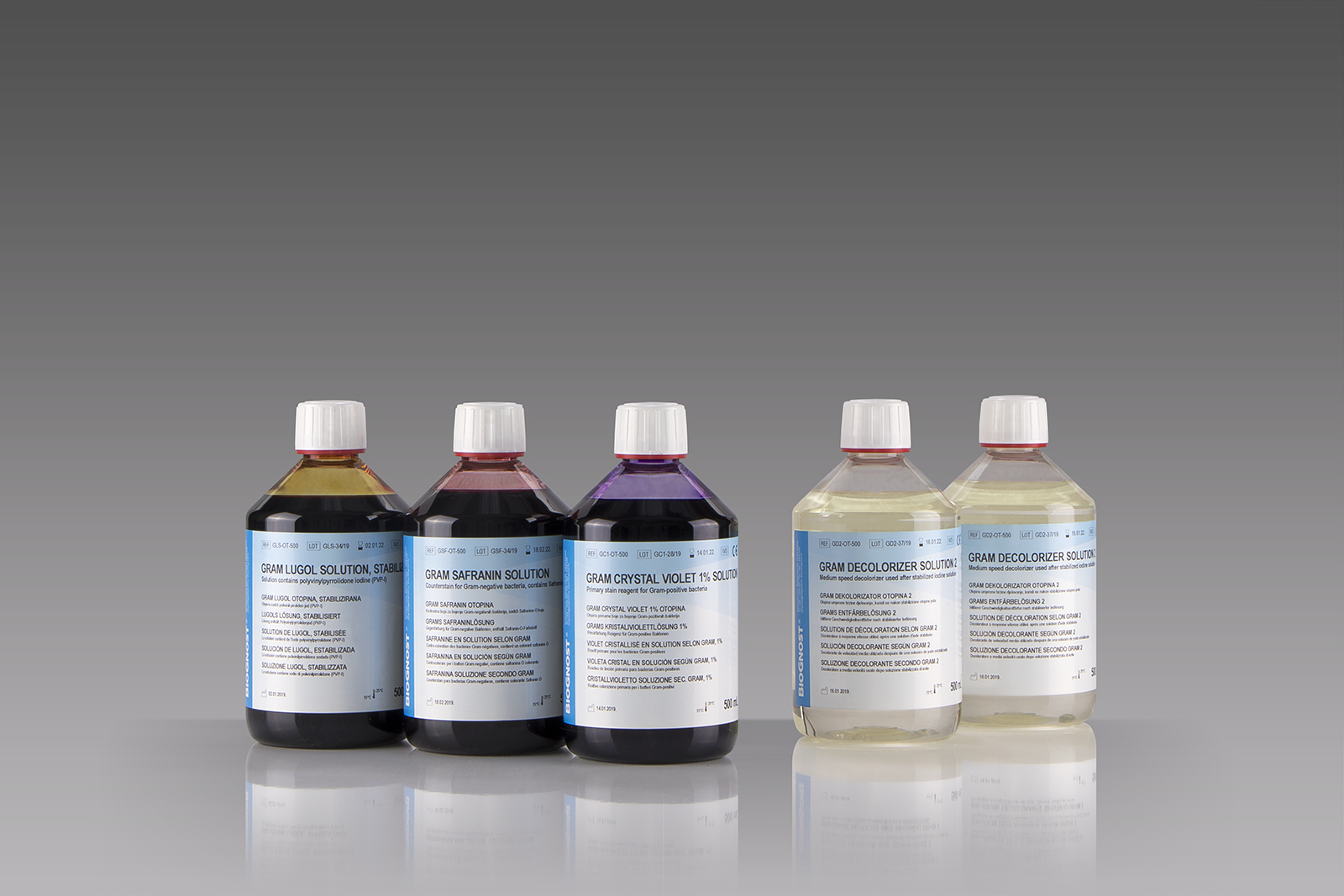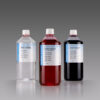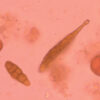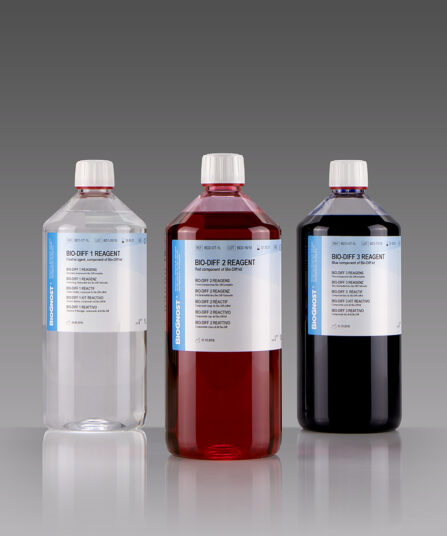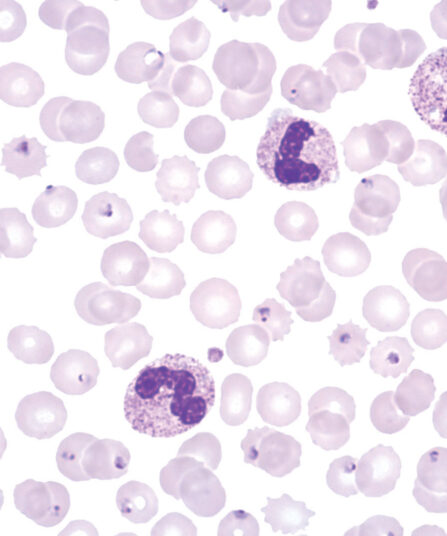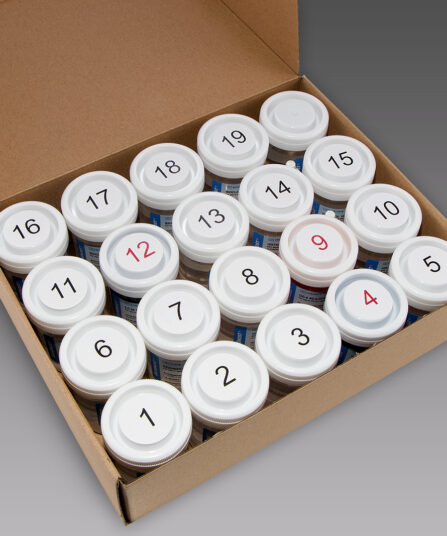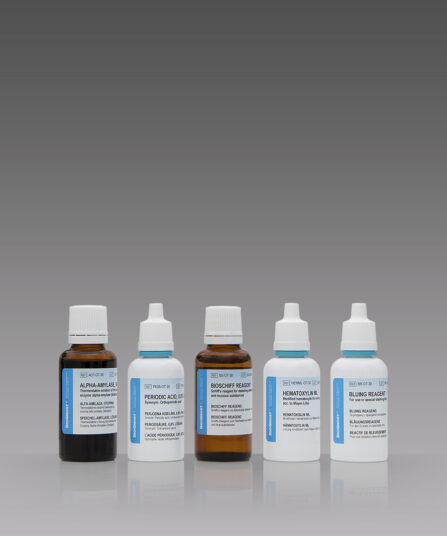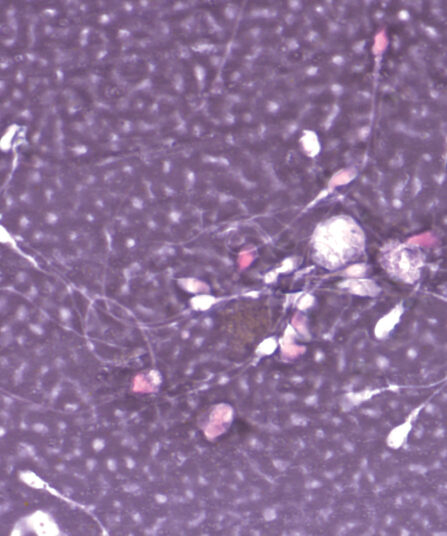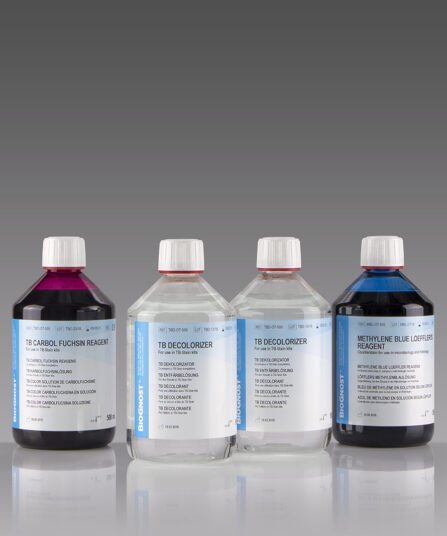Gram staining is a method of differentiating bacterial species and it is commonly known and used in microbiology. It is also one of the most frequently used diagnostic methods in hospital and clinical laboratories. Gram staining differentiates bacteria into two groups: Gram-positive and Gram-negative. That division is based on the two groups’ bacterial membrane structural differences, i. e. their capability of retaining the dye. Gram-positive bacteria have a thicker cellular membrane which enables retaining the dye inside the cell by treating them with iodine solution that creates insoluble iodine and primary dye complex. Gram-negative bacteria have a thinner cellular membrane structure that cannot retain the dye. It washes away through the membrane and using counterstaining forms the basis for differentiating between the two bacteria groups. BioGnost’s BioGram 4 kit contains Gram Crystal Violet 1% solution, stabilized Gram Lugol solution, two packages of Gram Decolorizer solution 2 and Gram Safranin solution. Its characteristics make it an optimal bacteria staining agent which provides consistent results.
BioGram 4 kit
Four-reagent kit for identification of bacteria according to Gram. Kit contains Gram Crystal Violet 1% solution, stabilized Gram Lugol solution, double amount of Gram Decolorizer solution 2 and Gram Safranin solution as counterstain.
5×100 ml bottles
Description
Related products
Stains Reagents And Dyes
Rapid Romanowsky (Diff Quik) Stain Kit 3×0.5L
Stain Kits
Bio-Diff Kit 3 X 1L
Three-reagent kit that contains fixative agent, red and blue components for fast and effective staining. Each kit contains buffer tablets for consistent staining results.
3×100 ml bottles
Stain Kits
Field kit 500ml
Ready to use two-reagent kit for rapid and efficient staining and detection of parasites in haematology samples. Primarily used for staining thin and thick blood smears (dense drop) for purpose of diagnosing blood parasites. Reagents are stored in containers that can be used as staining jars.
Papanicolaou Rapid Staining Kit, for 100 Tests
Ready-to-use eight-reagent kit (in 18 containers that can be used as staining jars) for rapid progressive gynecology and non-gynecology cytological samples. Contains xylene substitute as clearing agent and xylene substitute-based medium for permanent covering of samples.
PAP-100T for 100 tests
Stain Kits
P.A.S. Diastase Kit
BioGnost’s P.A.S. Diastase kit is most commonly used for identifying glycogen in liver. Periodic acid enables the molecules containing glycol groups to create aldehydes affected by Schiff’s reagent staining them violet (magenta). Specific stains are created by applying the PAS method on unsubsti-tuted polysaccharides, mucoproteins and glycoproteins, glycolipids and phospholipids. Alpha-amylase enzyme (also known as diastasis) is used for differentiation between glycogen and other PAS-positive structures by dissolving 1→4 glycosidic bonds, causing the glycogen to remain unstained after the PAS reaction. BioGnost’s P.A.S. Diastase kit uses thermostable enzyme which does not require heating to +37°C to be active, but incubat-ing the section at +37°C is preferred in order to achieve better glycogen breakdown. The same tissue section is used as negative control for this reaction, but the sample is not treated using alpha-amylase.
For 100 tests.
Stain Kits
Eosin-Nigrosin Vital
Fast detection (one-step detection) of sperm vitality and visualisation of dead and living sperm cells with one reagent. A simple, easy and fast method for semen analysis.
Stain Kits
Bio-Diff kit 3 x 500ml
Three-reagent kit that contains fi xative agent, red and blue components for fast and effective staining. Each kit contains buffer tablets for consistent staining results.
Stain Kits
TB-Stain Hot Kit
Three-reagent kit for staining acid-fast bacteria. Contains TB Carbol Fuchsin reagent, double amount of TB Decolorizer and Methylene Blue Loeffler’s reagent as counterstain.
4 x 100ml bottles.

